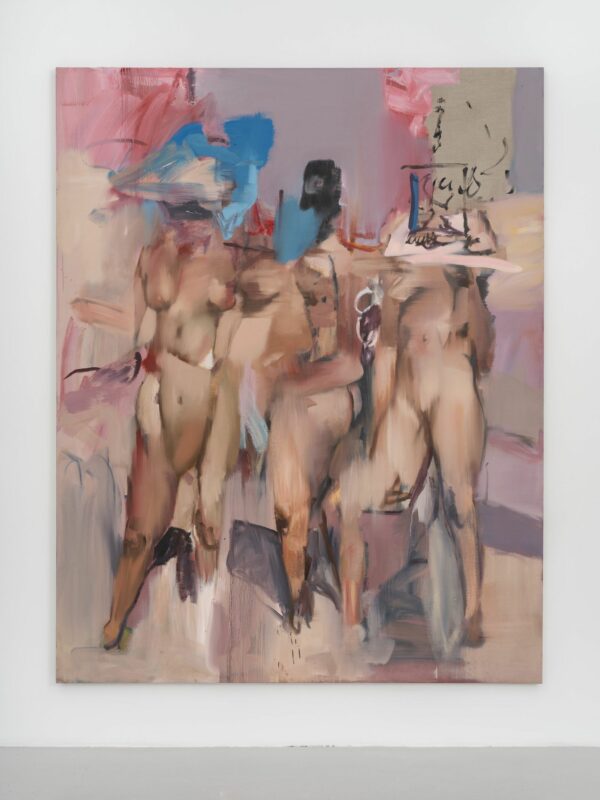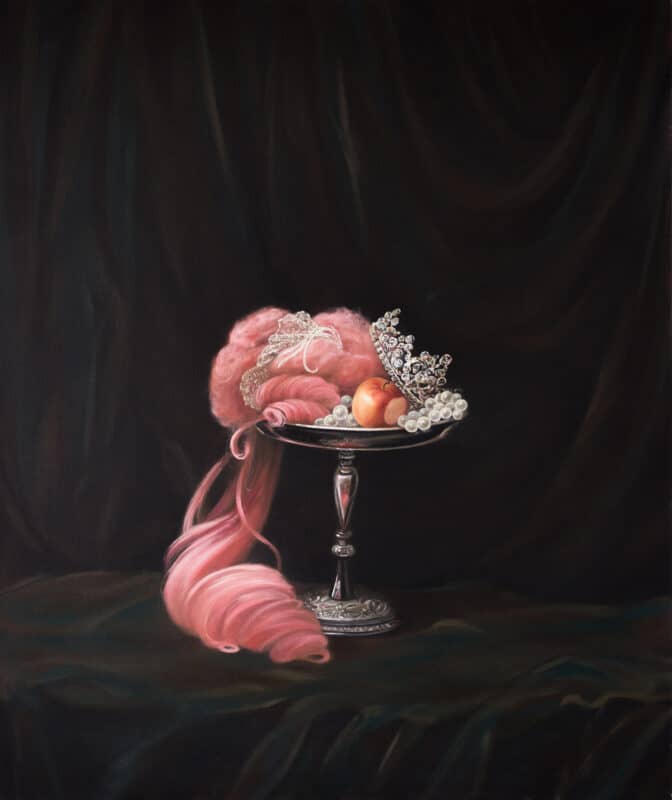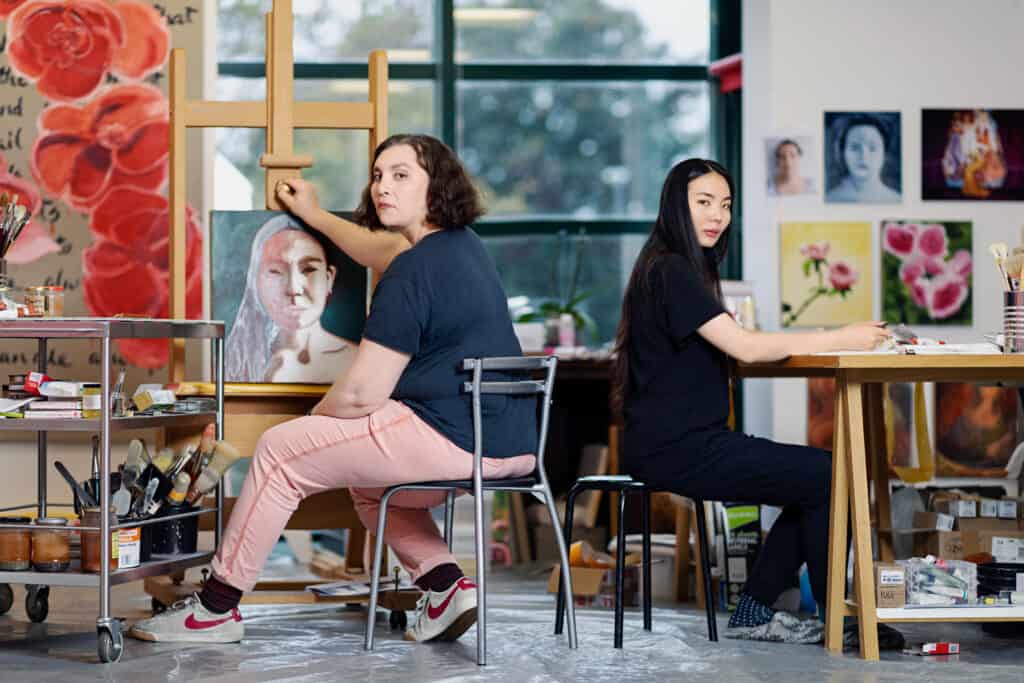
Throughout the history of art, love, desire and partnership have been powerful driving forces in the creation of triumphant works, both by united couples producing in collaboration and as emblems of loves lost or unrequited lust. Noteworthy pieces were forged in the fires of romance such as Virginia Woolf’s Orlando: A Biography and Auguste Rodin’s infamous ode to Eros, The Kiss.
In anticipation of their upcoming duo exhibition at newly opened Studio West in Notting Hill, I visited the artist couple continuing this lineage, Victoria Cantons and Xu Yang. Cantons and Yang are two artists at the forefront of contemporary painting, having recently shown at Saatchi Gallery, The Royal Academy, Guts Gallery and Cuturi Gallery. They live and work together, sharing a bright, airy, and slightly chaotic studio in West London. Every experience they have is collaborative, from the creative to the quotidian. It is surprising that this exhibition marks their first as a partnership, allowing a rare and special glimpse into their relationship alongside the love that reverberates through their work.
Victoria, the show will feature new developments in your floral paintings, presenting them as a background with affirmations painted on top. Can you tell us more about the floral paintings, which have been a significant feature in many of your works?
VC: Flowers came into my general practice a few years ago, when they initially appeared they were just an element in the paintings but around the time my mother died in 2018 they became more significant. For my mother’s funeral, I had no flowers because she hated cut flowers. Then I started thinking about how flowers appear in every aspect of our lives, literally from birth to the grave – you’re born and then your mother gets flowers, then throughout our lives there’s occasions of congratulations, happy birthday, I love you, I’m sorry, and then a funeral…flowers again. It’s this gesture that is so short-lived, it means everything at the time it’s happening, but the flowers don’t live that long. Even the sentiment within the gesture may soon be forgotten. One minute it’s ‘I love you’, the next you’re having a row and flowers are being thrown on the pavement. The canvases are like bunches of flowers, but they last, that’s why they always have very romantic titles.
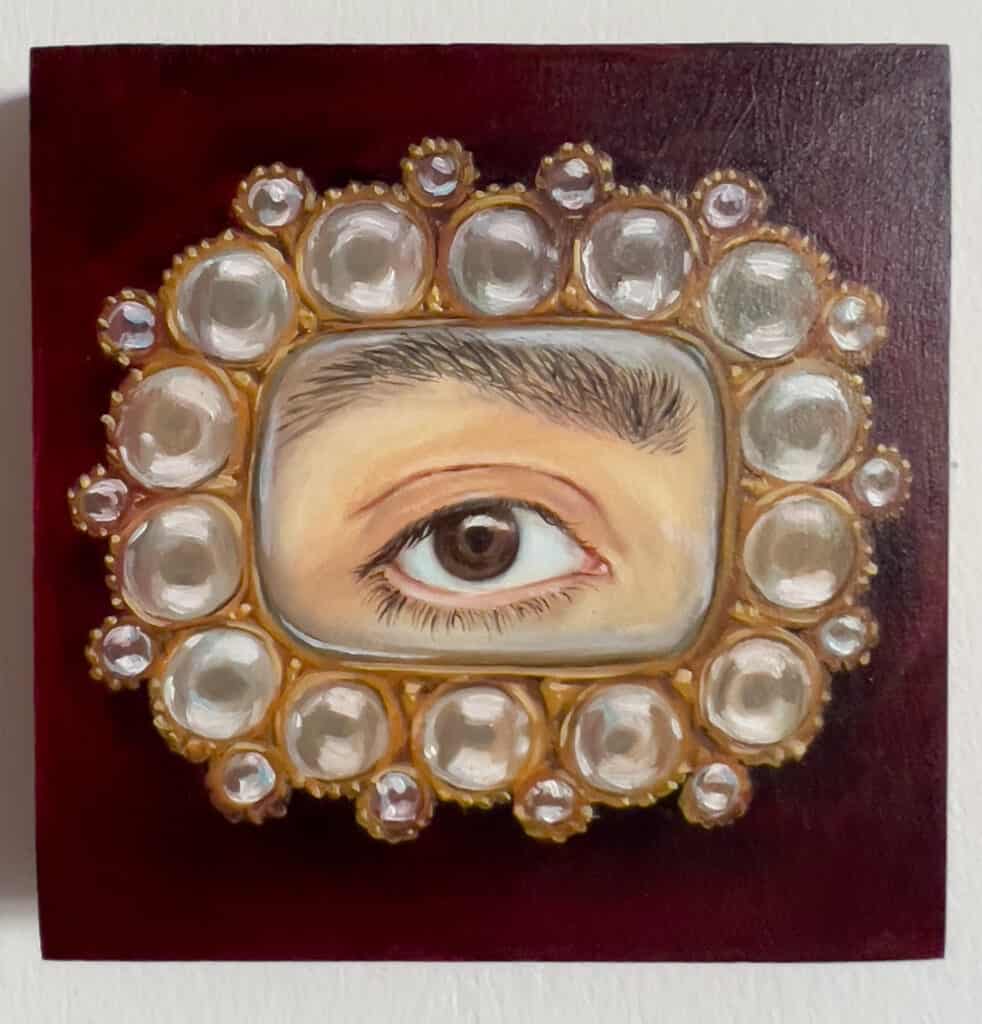
Yang, for the exhibition you will present photography and performance exploring identity. What are these all about for you?
XY: It’s really influenced by who I was and what I liked as a child. My mother was very restrictive regarding what I could wear, only allowing me to dress in black and navy blue or school uniform. I wanted to be a princess, I always felt I wanted something more. I came to London when I was 18, discovered drag performance and queer culture and realised I wasn’t the person my mother told me I was. I’m not just a straight girl. When I went to drag clubs, I loved how people expressed themselves. I learned from the LGBTQIA+ community that I could be myself. Victoria was the first person who let me be who I am and encouraged me. She makes me feel like I’m worth it and that I can construct myself in the way I want to be.
Together we went to National Trust properties, I loved to see the things I had heard about since I was little – princess culture really existed. The bedrooms and the carpets in these houses influenced my work. Then I read Judith Butler and began to think about gender as a construct and explore self-presentation at the same time.
What has it been like to create a show together as a couple? How does it differ from other previous exhibitions?
VC: Our lives are very entwined, we live together, we travel from home to the studio and back together. We are the last ones we see before we go to sleep and the first ones we see when we wake up – and of course, Covid has intensified that. We have been in each other’s company pretty much twenty-four seven most of the time, it’s only when one of us goes to the supermarket that we are not together.
There is a lot of overlap and shared thinking in the work that we create. For me, Yang is an extension of myself – she thinks and says the things that I don’t think of or challenges me almost like the inner voice in one’s head. The shared show is an exciting opportunity to see how work that we are making individually, but in such a unified manner, comes together. It’s more than just a show where two disparate artists are being brought together to see what happens, it’s a show of two really intertwined, interconnected, symbiotic practices that co-exist in an integrated way.
XY: We spend all our time together and we don’t feel it’s too much for us. I love when she’s around, it makes me feel safer and securer for my work and everything else. For the collaborative artworks, I really enjoy the dress up and performance, but I also must show my vulnerability and it makes me scared. I feel most able to do it if she’s with me. When I perform for the camera, I put my costumes together as explorations of constructed identity and must expose myself so much – I couldn’t do this in front of anyone but her. I trust her eye, so she is the one who has been photographing me for the past three years and hopefully many more.
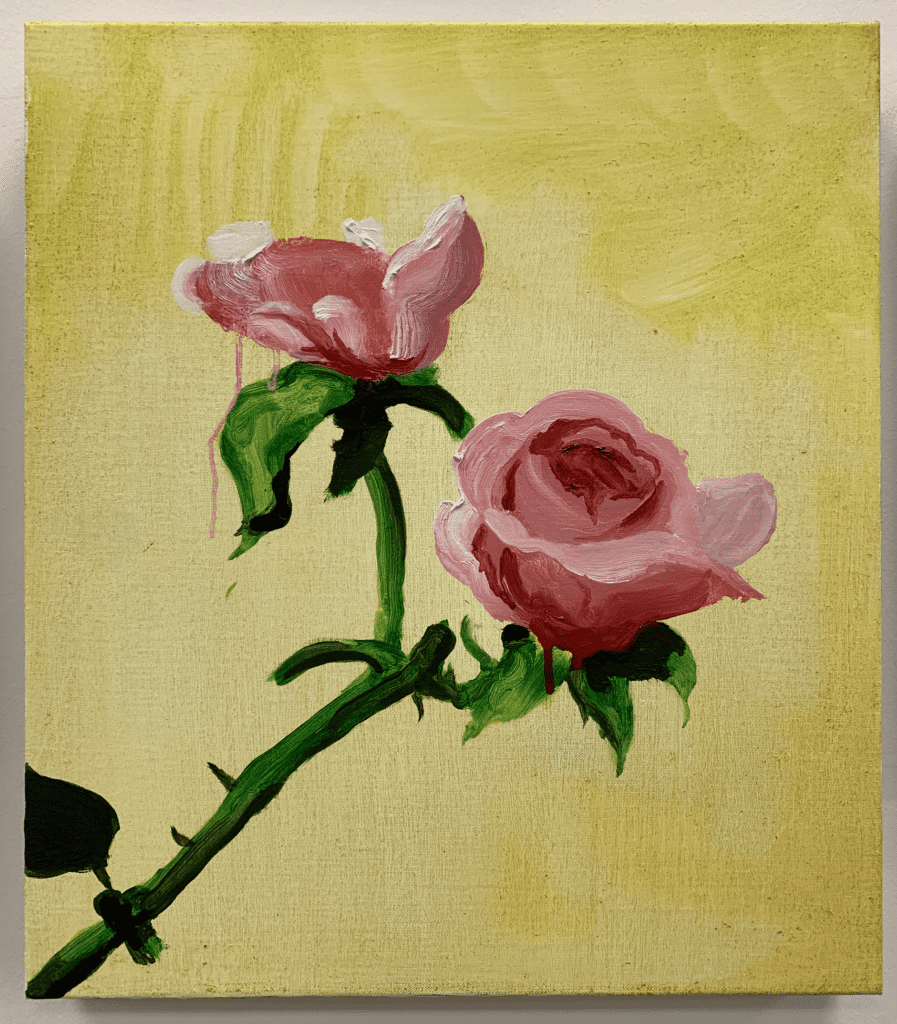
You work with each other as subjects, and you say your work is really imbued with feedback from one another – what does that feel like as a process? It’s clear that at the heart of this exhibition is the connection between you two as a couple, and the way that you collaborate.
VC: It’s a real gift, a real privilege to be able to share the studio with Yang, because I think making work in isolation is so much harder. Some of my peers love that solitariness but for me the opportunity to discuss ideas or get feedback is so helpful. I really like working together, it makes the whole process of making art a far more pleasurable one. Even when Yang isn’t here, I’m not really alone because her presence is still with me.
XY: We are brutally honest with each other about our work – we never hide anything. If I walk into a room and I don’t like what Victoria is doing I always tell her. We share references. When we started together, I was just focussed on dress up and performance. At the time, I wasn’t interested in painting because I had just spent fifteen years in the studio painting still life scenes and I couldn’t find a way to be creative through paintings. I rejected it entirely. When we met, I hadn’t painted for two years but then she began to tell me about art history – Velasquez, Goya, male gaze and female gaze, and I took a lot of influence from this. I also learned a lot from her about materials, she’s the expert and I’m still learning from her three years later. She knows all the pigments and grounds, everything really. After we met, I got back into painting but found a way to be comfortable and portray my own voice.
We share everything, go to shows together and always see things differently because of our different backgrounds. I might point out technicalities to her, my master from school was an impressionism expert so I know a lot about light and mixing colours.
What is it like to depict or capture each other, whether you are using painting, photography, or other media? What does it feel like and is there something particular about that experience because of the bond you have?
VC: What comes into that experience is an issue of trust, and knowledge of one another. I think the trust element allows each of us to really push and dig deeper to bring out something new.
XY: When it comes to the photographs we make together, I talk about the idea then we start setting up and collaborate on the set design choices to add symbolic elements. We always exchange our thoughts. Often, I set up the whole scene to follow my aesthetic then Victoria is the framer, she frames me in the space.
I love how our work is entwined. I love the way she paints me; they look different than when she depicts other subjects. She treats the paintings of me more carefully, I can see it by the way she handles brushes, she’s more focussed. I love when she’s photographing me because I feel there is no part of myself that I have to hold back.
What does the exhibition title Tomorrow Will Be The Most Beautiful Day Of Your Life mean to you?
VC: A lot of Yang’s work explores ideas of identity and who we are – for me this title speaks to a desire to manifest oneself in a better way. The floral paintings are embedded in these very romantic ideas and Yang’s work is tied into how one creates an identity and what they present to the world. A major facet of Yang’s work is questioning the projected and perceived identities that we have, so for me the title pulls in ideas of how we create ourselves to step out into the world. There is a question of ‘Who will I be tomorrow?’.

Tomorrow Will Be The Most Beautiful Day Of Your Life by Victoria Cantons and Xu Yang will open at Studio West on the 11th of November, running until the 15th December 2021. This will be curator Caroline Boseley’s inaugural exhibition at her new space Studio West. The gallery promises to be a cultural hotspot in Notting Hill and will run a programme of events, workshops and community projects alongside its regular exhibitions. Studio West is a gallery run for emerging and newly established artists, allowing them to show their artwork in the way they want it to be seen. studiowest.art

